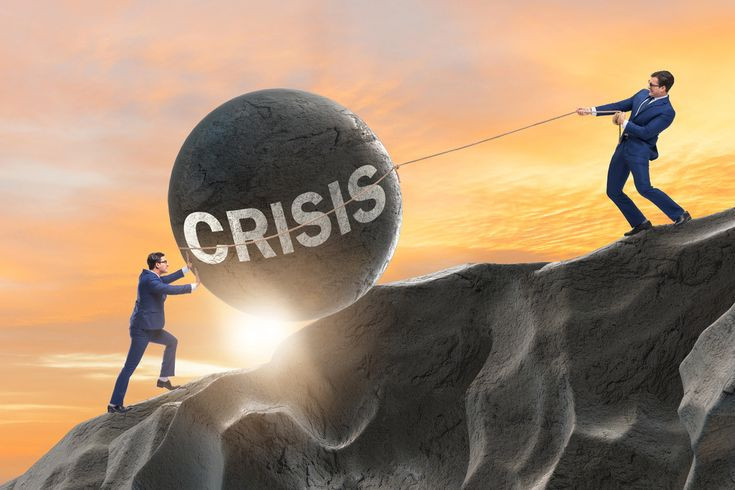views

When bad news breaks, a company’s response can make or break how people see it. Folks often call it “PR crisis management,” but there are two ways to handle it: crisis communication and damage control. Knowing what sets them apart helps businesses do the right thing when trouble hits.
News sites like Coindesk show how messy things, like crypto crashes, play out in front of everyone. Some companies jump in and steer the story early. Others just try to mop up the mess after it’s everywhere.
So, what’s the difference? This article explains it in plain, everyday words. It’s about people, honesty, and building trust. A leader who talks straight during a tough time earns respect.
A company that hides or twists the truth usually loses it. These days, social media, whistleblowers, and reporters make it hard to fake being real.
Companies like 9FigureMedia, who get stories into big news outlets, focus on acting fast instead of just fixing things later. They help startups and bosses figure out what to say, when to say it, and how to stay cool under pressure.
That’s what makes crisis communication about leading, not just marketing. Damage control happens when folks ignore the warning signs.
Platforms like Apple News Publisher spread news crazy fast. One ignored complaint or dumb tweet can blow up into a huge story in no time. That puts bosses, lawyers, and PR folks under a lot of heat.
They’re smart, picky, and care about feelings, not just facts. Companies have got to mix truth with care, speed with thought.
Outlets like The Washington Times keep an eye on how companies handle rough moments. Their stories about political messes or money scandals show where damage control falls flat and crisis communication comes through.
It’s all about what bosses knew and when they decided to speak up. That choice, talking early or defending later decides who bounces back and who doesn’t.
Historical Background

Crisis communication started over 100 years ago as part of public relations. It really took off during big problems, like factory accidents back in the early 1900s.
Companies couldn’t just fix things quietly they had to talk to the public. Those early troubles, often about unsafe jobs or broken products, taught businesses that ignoring folks could lead to boycotts or worse.
They started figuring out how to talk to people to keep their trust. Things got a lot clearer in the 1980s. In 1982, Johnson & Johnson dealt with a scary mess when someone poisoned Tylenol, and seven people died.
They didn’t wait around they pulled 31 million bottles off shelves and stopped making more. They told everyone what was happening, from their investigation to new safety caps.
Their boss, James Burke, talked straight to customers, putting people’s safety over cash. That honesty saved the brand and even made it stronger. People still talk about the Tylenol story in schools as the right way to handle a crisis.
Damage control, though, showed up in shadier times. The Watergate scandal in the 1970s was a big example. Politicians tried to twist the truth with leaks, denials, and spin to save themselves, but the cover-up just made it worse.
That’s what damage control is reacting after the mess is already out there, trying to save face instead of fixing things. It usually left folks doubting and trust broken.
Some early PR folks helped shape these paths. In 1906, Ivy Lee told companies to be honest with the media, which was a big deal back then. He worked with railroads during wrecks and set the stage for crisis communication.
Like on Apple News Publisher, it matters how the story looks. Is the company sharing its side first, or just scrambling to calm people down? People notice.
Later, people like W. Timothy Coombs came up with plans, like something called Situational Crisis Communication Theory, to help companies figure out the best way to respond to different kinds of trouble.
Those plans were all about being ready and caring, not just reacting.
As media changed, companies had to keep up. TV in the 50s, radio, and then the internet in the 90s made news spread faster. Social media in the 2000s meant you couldn’t stay quiet waiting too long was like shouting you didn’t care.
Companies like BP learned this during the 2010 oil spill. Their slow, defensive response made people madder, showing how damage control can flop.
Key Differences Between Crisis Communication and Damage Control

Even though the names sound similar, crisis communication and damage control come from different places, aim for different things, and end up with different results.
1. Timing and Strategy
Crisis communication is about getting ahead of trouble, often before it’s all over the news. It’s like preparing for a storm putting together a team, picking who’ll talk, and practicing what to say. The idea is to steer the story from the get-go.
Companies think about what could go wrong, like a product breaking or a data hack, and get ready. They train folks, write clear messages, and even do pretend crises to stay sharp.
That way, when trouble hits, they can talk with confidence, calm folks down, and stop rumors before they spread. It’s like setting up sandbags before the flood comes.
Damage control is what happens when the flood’s already here. The problem’s out, people are mad, and the company’s stuck reacting. Without a plan, it’s a mess bosses might say one thing, PR another, and nobody’s on the same page.
There’s no time to think, so responses come off rushed or sloppy. The company’s just trying to put out the fire, but it’s hard without preparation. They lose their grip on the story, and people start losing trust.
It’s like trying to fix a busted pipe in the middle of a flood panicked and all over the place.
The timing makes all the difference. Crisis communication is calm and planned, built on thinking ahead. Damage control is a wild scramble, often making things worse.
2. Intent
Crisis communication is all about building trust by being honest and caring. It puts people first customers, workers, or anyone affected. If something goes wrong, like a bad product or a security mess, the company admits it, shares what happened, and says how they’ll make it right.
They show they’re listening and care about those who got hurt. That kind of openness can turn a bad day into a chance to prove they’re reliable.
It’s like saying, “We goofed, but we’re fixing it,” and really meaning it. The goal is to keep people’s trust, not just cover up.
Damage control is more about saving the company’s skin. It’s focused on keeping the brand from looking bad, even if that means stretching the truth. They might hide details, spin the story, or point fingers elsewhere.
Lawyers often jump in, making sure every word keeps the company out of legal trouble, but that can make things feel cold or sneaky. Instead of building trust, damage control just tries to dodge the worst of the hit.
It’s less about solving the problem and more about looking like it’s handled, even if people end up feeling tricked.
This difference in heart matters. Crisis communication feels like a friend admitting a mistake. Damage control feels like a car salesman dodging your questions.
3. Tone
Crisis communication talks like a real person, not a suit. It’s warm, clear, and caring. A boss might step up, look folks in the eye (even on video), and say sorry like they mean it.
They show they understand how the trouble affects people whether it’s a bad product or a public screw-up. That human touch can cool down anger and get folks talking.
The words are simple, honest, and straight-up, making people feel heard. It’s like a neighbor explaining why their kid broke your window and promising to fix it.
Damage control sounds like it’s reading from a script. It’s stiff, with formal words or vague promises that don’t say much. Instead of owning the problem, it might downplay it or throw in jargon to muddy things up.
It feels like lawyers wrote it, not people, and that distance ticks folks off. It’s the difference between a real apology and a lame “we’re sorry if you were upset.”
That cold tone makes people feel brushed off, and it can make it seem like the company’s hiding something, which just fuels the fire.
4. Outcome
Good crisis communication can actually make a company look better. When bosses respond with honesty, people respect it. A real apology or quick fix can turn haters into fans.
Picture a diner that admits they messed up a batch of food, fixes it fast, and gives out free meals to make it right. Companies that own their mistakes often recover quicker and build stronger loyalty.
Customers and workers feel like they matter, and the brand can come out shining. It’s about turning a mess into a chance to show who you really are.
Damage control, though, doesn’t win many friends. It might stop the worst for a bit like killing a bad headline or dodging a lawsuit but it comes at a cost. People see through spin or half-truths, and trust takes a hit.
Bad news sticks around, and customers might bail. Workers, too, lose faith if they see their bosses dodging the truth. The damage can hang on for years, like a bad smell that won’t go away.
While damage control might get through the day, it often leaves the company weaker, with friendships broken and respect fading.
The outcome shows what’s at stake. Crisis communication builds loyalty; damage control just limps along.
5. Long-Term vs. Short-Term
Crisis communication is about the long game. It’s tied to what a company stands for, like being honest or caring for customers, and it plans for tomorrow.
Companies set up ways to spot trouble early, train folks to handle it, and keep their promises. That builds trust that lasts, making the brand tougher against future storms.
It’s like planting a garden you put in the work now, knowing it’ll grow for years. The focus is on keeping people close and building a reputation that holds up.
Damage control is just about right now. It’s chasing quick wins, like shutting down a bad news story or calming upset investors. It’s all about surviving the moment keeping the stock price up or avoiding a courtroom.
But it skips the bigger problems, like why the mess happened or how to stop the next one. That leaves the company open to more trouble, like a house with a quick-fix roof that’ll leak again.
Workers and customers see when bosses only care about the short term, and that chips away at trust. Damage control might win today but sets you up to lose later.
This focus shapes what’s next. Crisis communication builds a solid base; damage control just patches cracks.
6. Stakeholder Engagement
Crisis communication brings everyone into the loop workers, customers, reporters, investors. It shares clear updates, answers questions, and makes folks feel like they’re part of it.
Bosses might call workers directly, set up hotlines for customers, or talk to the media to keep things straight. That open door builds trust and keeps everyone together.
Even when the news is rough, people appreciate being included. It’s like a family huddle where everyone gets to speak, even if it’s about something hard. This stops rumors and shows the company cares.
Damage control often leaves people out. Info gets locked down, run through lawyers or PR folks. Some groups, like workers or local folks, might hear nothing at all.
The goal is to control the story, not connect with people. But that backfires when ignored folks like workers or customers take their gripes to social media or the news. It’s like leaving half the family out of a big decision; they’ll feel hurt and make noise.
Damage control tries to keep things quiet but often stirs up more trouble by shutting people out.
Who you talk to matters. Crisis communication welcomes everyone; damage control picks and chooses.
Conclusion

The difference between crisis communication and damage control isn’t just fancy terms it’s about how companies are seen, how bosses are remembered, and whether people keep trusting them.
Crisis communication is about being ready, honest, and caring. It turns bad days into chances to show you’re solid. Bosses plan ahead, act fast, and talk straight, showing they put people before profits.
Damage control is a last-minute scramble, often full of excuses or spin. It might getPhysical education for all ages. It might get you through the moment, but it rarely saves the trust.
It’s reactive, dodging blame, and leaves bigger problems unfixed.
Today, with places like Coindesk, Apple News Publisher, The Washington Times, and PR teams like 9FigureMedia, companies can’t hide. News spreads like wildfire, and people want real answers, fast.
One wrong step can snowball, but a true, heartfelt response can win folks over. Crisis communication builds trust that lasts; damage control just tries to stop the bleeding.
In a world where every word sticks around and every delay gets noticed, knowing the difference isn’t just smart it’s everything for a company trying to come out stronger.










